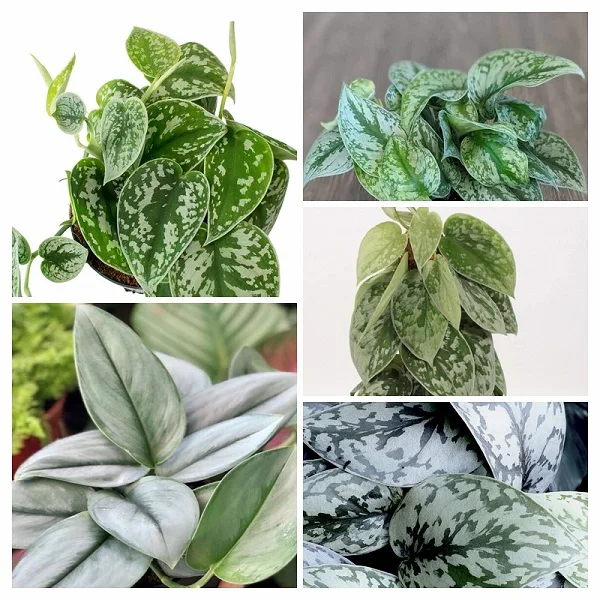18 Types of Pothos Plants with Names and Pictures
Last updated on
Some links in this post may be affiliate links
Pothos varieties are popular, easy-care, climbing or trailing plants that are perfect for a hanging basket, a pedestal, a trellis, moss stick and anywhere they can be allowed to climb or hang downwards.
Pothos are flowering, perennial plants in the family Araceae. True Pothos are botanically classified as Epipremnum aureum formerly Scindapsus aureus.
In addition, some Epipremnum pinnatum and Scindapsus pictus varieties are often referred to as Pothos. However, their care and growing conditions are similar.
Although Pothos are toxic to both humans and pets, they remain to be some of the most popular foliage plants on account of their ease of care and foliage variety.
If you would like to acquire these charming plants for your collection, you may acquire beautiful and healthy Pothos online from Amazon (Link to Amazon). We have outlined herebelow 18 Pothos Plants Varieties to make it easier for you to make your selection.
18 Pothos Plant Varieties for Indoor Growing
Best Pothos varieties are Epipremnum aureum, Epipremnum aureum 'Neon', Epipremnum aureum 'Marble Queen', Epipremnum aureum 'Manjula', Epipremnum pinnatum 'Cebu Blue', Scindapsus pictus ‘Argyraeus' among others.
(A) Epipremnum aureum Pothos Varieties
Epipremnum aureum or Scindapsus aureus grow best in medium to bright indirect light, warmth of 18-290C, humidity of 50-55% and moderately moist, rich, well-drained potting soil coupled with monthly feeding in the growing season. Learn how to grow and care for Scindapsus aureus Pothos.
1. Golden Pothos (Epipremnum aureum)

Golden Pothos also called Devil's Ivy is the easiest and most popular of the Pothos Plants. It bears waxy green leaves with golden yellow varieagation.
Devil's Ivy is a fast grower and will reach the height of 10 ft in a very short time when grown indoors. Though it can adapt to low light, it grows best in bright indirect light.
2. Neon Pothos (Epipremnum aureum 'Neon')

Neon Pothos bears green-yellow leaves and requires bright indirect light inorder to keep the bright leaf color.
The plant is often mistaken for Philodendron lemon lime as the leaf color is similar. It has a variegated variant, 'Variegated Neon Pothos'.
3. Marble Queen Pothos (Epipremnum aureum 'Marble Queen')
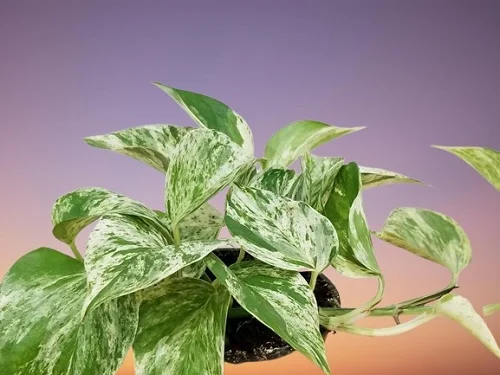
Marble Queen Pothos bears green leaves with white or cream variagation. It requires medium to bright indirect light to maintain the variegation.
4. Manjula Pothos (Epipremnum aureum 'Manjula')
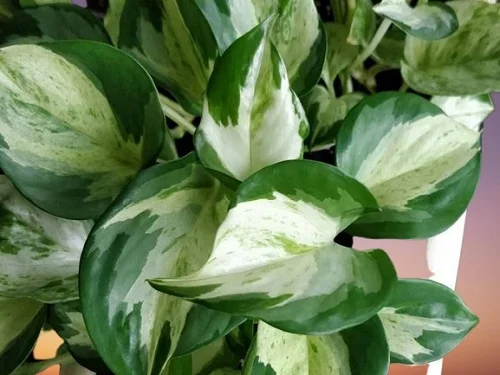
Manjula Pothos is similar to Marble Queen Pothos but the leaves are wider and more round. The leaves are cream yellow-white with light and dark green variegation.
Manjula Pothos is a patented variety developed at University of Florida. It grows best in bright indirect light to keep the variegation.
5. Pearls & Jade Pothos (Epipremnum aureum 'Pearls and Jade')
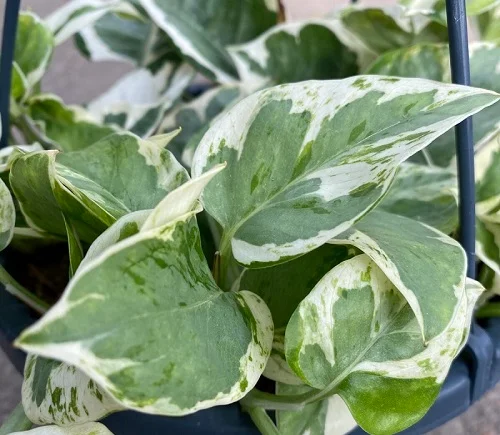
Pearls & Jade Pothos is a patented form of Marble Queen Pothos developed at University of Florida. The plant bears smaller leaves than other Pothos.
The variegation in Pearls & Jade Pothos is white and occurs along the edges. It requires bright indirect light to maintain the variegation.
6. N'Joy Pothos (Epipremnum aureum 'N'Joy')
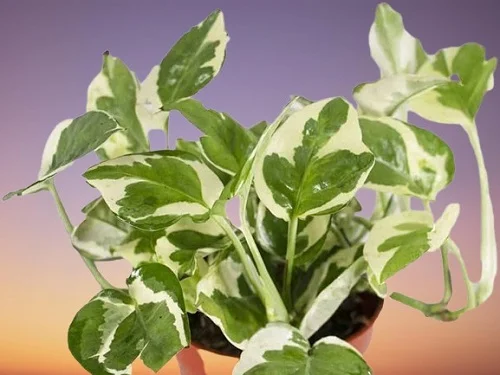
N'Joy Pothos looks like Pearls & Jade Pothos at a first glance. The difference between them is that it does not have the small splashes of green on the leaves which are present in Pearls & Jade Pothos.
It is a slow growing Pothos which grows best in medium to bright indirect light inorder to maintain the variegation.
7. Snow Queen Pothos (Epipremnum aureum 'Snow Queen')
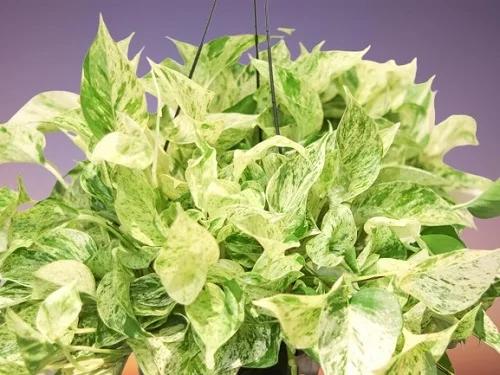
Snow Queen Pothos is similar to Marble Queen Pothos but it is more highly variegated with white and small streaks of light green.
Due to the high variegation, the plant grows slowly and requires bright indirect light to keep the beautiful variegation.
8. Jessenia Pothos (Epipremnum aureum 'Jessenia')
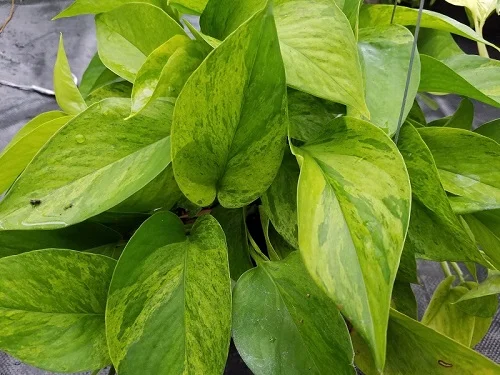
Jessenia Pothos is a cultivar of Marble Queen Pothos. It is a patented plant discovered by Costa Farms in 2014.
This Pothos is a slow grower which bears highly variegated green and yellow-green leaves. It requires medium to bright indirect light to maintain the variegation.
9. Jade Pothos (Epipremnum aureum 'Jade')
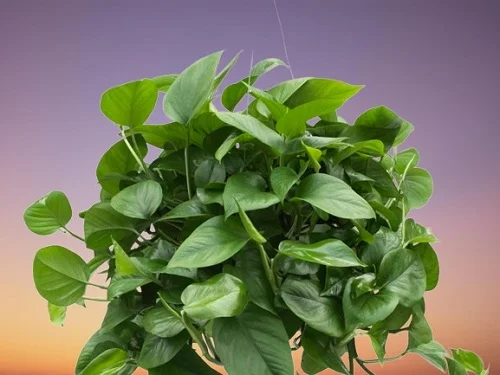
Jade Pothos bears narrow, solid green leaves with no variegation. It is best suited for low light conditions. However, it grows best in medium to bright indirect light.
10. Global Green Pothos (Epipremnum aureum 'Global Green')

Global Green Pothos is a rare gorgeous plant which bears dark-green and light-green mottled leaves. It grows best in medium to bright indirect light.
11. Glacier Pothos (Epipremnum aureum 'Glacier')

Glacier Pothos is a rare slow growing Pothos which bears green leaves with silvery white variegation. At a glance, it looks like a Pearls & Jade Pothos or an N'Joy Pothos. It grows best in medium to bright indirect light.
12. Harlequin Pothos (Epipremnum aureum 'Harlequin')

Harlequin Pothos is one of the rare Pothos. At a glance, it looks like a Manjula Pothos but it has more white variegation.
The Harlequin Pothos grows best in bright indirect light to maintain the variegation.
(B) Epipremnum pinnatum Pothos varieties
13. Dragon Tail Pothos (Epipremnum pinnatum)
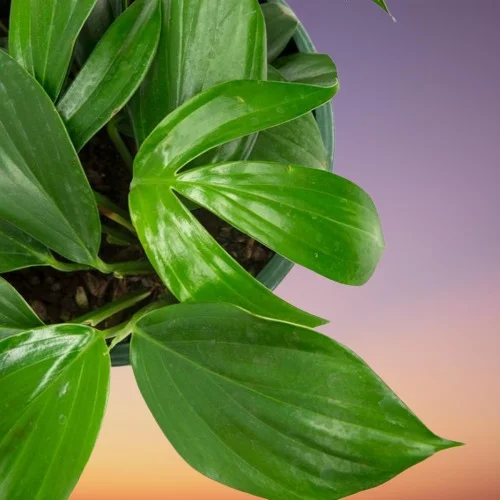
Dragon Tail Pothos also called Dragon Tail Plant bears thin, jade-green leaves which become lobed as it matures giving them the appearance of a dragon tail.
Epipremnum pinnatum performs best in medium to bright indirect light, warmth of 15-280C, humidity of 50-55% and moderately moist, rich, well-drained potting mix coupled with monthly feeding. Learn how to grow and care for Dragon Tail Pothos.
14. Cebu Blue Pothos (Epipremnum pinnatum 'Cebu Blue')
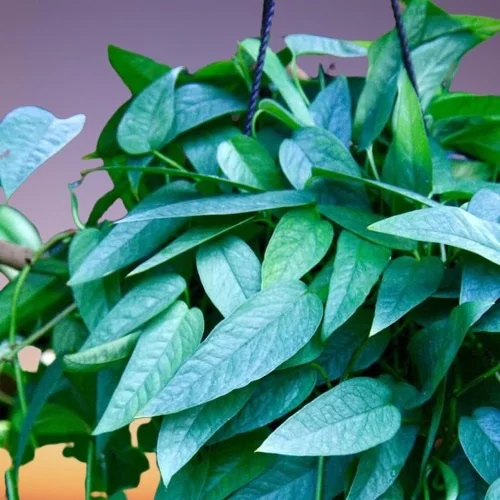
Cebu Blue Pothos is a vigorous grower which bears narrow, silvery green-blue leaves which develop fenestrations as it matures.
Epipremnum pinnatum 'Cebu Blue' blossoms in medium to bright indirect light, warmth of 15-280C, humidity of 60-70% and moderately moist, fertile, well-drained potting mix coupled with monthly feeding in the growing season Learn how to grow and care for Cebu Blue Pothos.
15. Baltic Blue Pothos (Epipremnum pinnatum 'Baltic Blue')
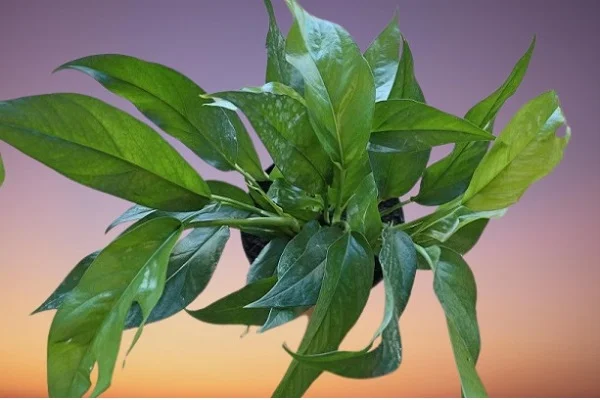
Baltic Blue Pothos is a clone of Dragon's Tail Pothos which bears narrow, dark-green leaves with a blue undertone. The elongated, dark-green leaves have a bluish tint which is more prominent during the colder season.
Epipremnum pinnatum 'Baltic Blue' requires medium to bright indirect light, warmth of 18-290C, humidity of 60-70% and moderately moist, fertile, well-drained soil coupled with monthly feeding in the growing season. Learn how to grow and care for Baltic Blue Pothos.
(C) Scindapsus pictus Pothos varieties
Scindapsus pictus blossom in medium to bright indirect light (filtered light), warmth of 15-290C, humidity of 50-55% and moderately moist, rich, well-drained soil coupled with monthly feeding during the growing season. Learn how to grow and care for Scindapsus pictus Pothos.
16. Satin Pothos (Scindapsus pictus ‘Argyraeus')
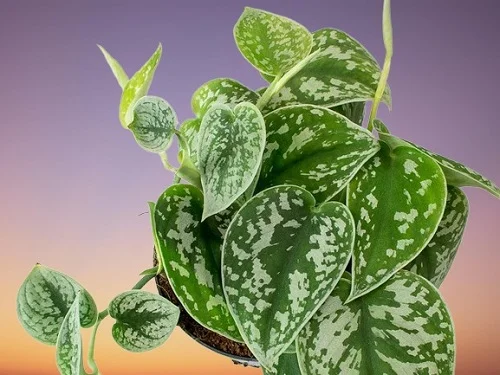
Satin Pothos is a spectacular plant whose leaves are dark-green, splashed with silver green and have a metallic sheen.
17. Silver Satin Pothos (Scindapsus pictus ‘Exotica’)
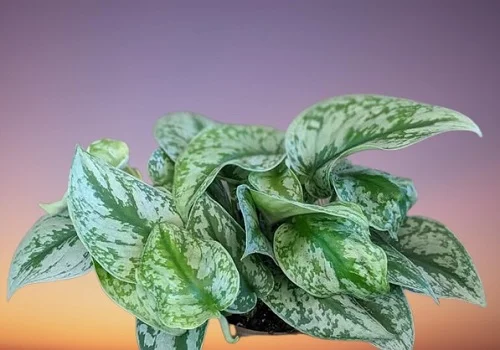
Silver Satin Pothos bears large, thick greenish-blue leaves with silvery-grey variegations. To keep the variagation, it requires bright indirect light.
18. Treubii Pothos (Scindapsus pictus ‘Treubii’)
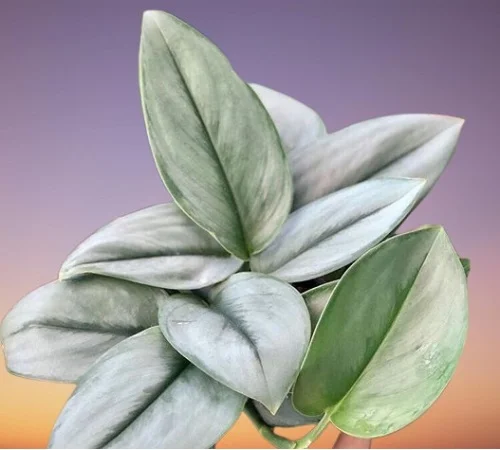
Treubii Pothos comes in two forms; Moonlight (featured) which bears silvery-green leaves and the Dark Form which bears dark-green nearly black leaves.
The Dark Form is a rare and expensive plant and you are unlikely to get it easily.
